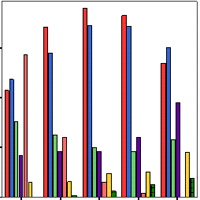
Label Networks data reveals why youth culture is cutting back on spending, their motivations, and differences by demographics.
Fresh data and analysis being released for Label Networks’ Spring Global Youth Culture Study 2008 indicates great changes in communication and networking patterns among 13-25-year-olds in North America. In this story, we concentrate on the usage patterns of young people when it comes to Social Networks and Updating one’s Personal Profile Page.
In Label Networks’ new Spring Youth Culture Study 2008, we asked a series of questions about the upcoming election to get a sense of just how 13-25-year-olds are voting or would vote if they could, how they feel about their potential future President, who plans on voting (of those that are eligible), and who they “wish” was a Presidential candidate. The results are quite fascinating because in many ways, it provides insight about the future when it comes to politics, and which demographics within youth culture are more likely to get involved compared with others.
Copyright ©2001-2020
Label Networks Inc.
All Rights Reserved.